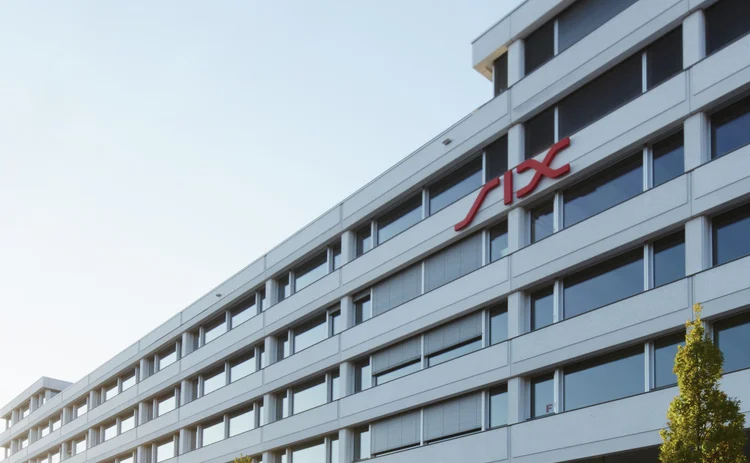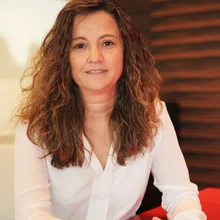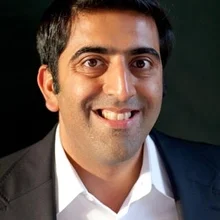SIX’s Purchase of BME Boosts Presence but Tech Challenges Lie Ahead
Exchange partnership will deliver benefits of scale but rationalizing trading infrastructure will take time, say observers

The best acquisitions are symbiotic. Rather than a stronger entity imposing its will on the acquired, both teams bring something to the table that makes the combined unit a greater force in the market.
It will take time to gauge whether SIX Group’s €2.57 billion ($2.9 billion) purchase of Spanish equities exchange operator Bolsas y Mercados Españoles (BME) is an example of a well-formed partnership, but it’s a deal that SIX has been looking to close for a while. No matter what, it will create the third-largest operator of financial market infrastructure in Europe by revenue.
Sofía Antón, head of electronic trading at Madrid-based Auriga Global Investors, says a significant amount of flow in the Spanish-speaking equities world comes from retail investors, and that’s something that SIX can help with.
“SIX can provide a lot of solutions to BME to promote all of that. BME during [previous] years has done very good work in South America. So BME is opening a way for SIX Group to [expand in] the South American market,” Antón says. “It is a positive acquisition for both sides because it is going to be a greater group.”

BME’s electronic trading system, SIBE, was developed in house and connects the four regional Spanish stock exchanges: Bolsa de Barcelona, Bolsa de Bilbao, Bolsa de Madrid and Bolsa de Valencia. The exchange operator has also provided trading technology to exchanges in Latin America, including those of Bolivia, the Dominican Republic, Ecuador, El Salvador, Uruguay and Venezuela.
“The connection with South America is very important,” Antón says.
Earlier this month, BME, in a joint initiative with Mexico’s Bolsa Mexicana de Valores, began operations to create and sell Latin American financial market data.
For its part, the Swiss exchange operator has said it wants to help BME become the main business hub for the Latin American markets, as well as grow its footprint in the Middle East and Africa.
Mix and Match
Exchange acquisitions are often followed by the integration of each firm’s technology to form a common trading and clearing platform. This is a complex and lengthy process, however.
SIX said in its bid for the Spanish group that it planned to retain the brands that currently reside under the BME umbrella, as well as its business activities, for a transition period of at least four years. It also indicated that the BME business will continue to have a sufficient degree of independence.
But examples of past mergers suggest there is likely to be some form of rationalization and convergence between the two companies’ trading platforms in order to achieve economies of scale, says Hirander Misra, CEO at blockchain company GMEX.
“If you look, the disparity is there,” he says. “On the one hand, there has got to be a call on, ‘Do we at some point rationalize what we do on the front-office trading platform side and have a common platform?’—a bit like what Euronext has done successfully with its acquisitions, because anything under the Euronext umbrella runs under a single technology platform.

“Even more complicated is the post-trade infrastructure, and how you get rationalization efficiencies there, because that is siloed,” says Misra, who was co-founder and former chief operating officer of equities trading venue Chi-X Europe, which was subsequently acquired by BATS Global Markets.
SIX’s trading technology is based on Nasdaq’s X-stream INET multi-asset trading platform. For clearing and settlement, it has SWXess, a fully integrated platform that also utilizes Nasdaq technology.
“On the post-trade side, they have a number of different platforms, but the core CSD [central securities depository] platform is still on mainframe. Together with that, they are building an infrastructure with SIX Digital Exchange to connect back into that traditional infrastructure, but now using the Corda blockchain framework that they are doing,” Misra says.
“The challenge arises when you have in-house technology, whether it’s dated or not. There are large teams there, a level of emotional attachment, and everything that goes with that. Because the BME trading platform was developed in house … is there an argument to move to that? I’d contend that can be dismissed because the platform’s somewhat dated and doesn’t necessarily lend itself to scaling in a way that modern systems would.”
Misra says there would be more inclination to move to what SIX is running, though the X-stream platform was optimized for SIX several years back and is no longer new itself. However, he says this would result in job losses in Spain during a period of economic slowdown. Depending on how ambitious SIX is in terms of offering infrastructure and wider services, Misra says a third option could be to develop its own trading technology, similar to Nasdaq and the London Stock Exchange Group (LSEG), but that would be a more costly and time-consuming route.
Auriga’s Antón says BME’s trading system has advanced a lot in the past 10 years, and she points to other advantages for SIX.
“BME has a CCP [central counterparty] and a CSD that is working with the other European CCPs and it is inside the European Union,” she says.
Data, the Deal Clincher
Antón adds that the merger of the two exchange groups will enable BME to improve its market data offering.
“Nowadays, BME is just offering BME data—[they are] not a vendor for any exchanges, they are just distributing their own market data,” she says, noting that SIX is an experienced market data provider.
Misra agrees, saying SIX is very strong when it comes to creating structured products, for example, which require a subset of underlying data.
“There is a big opportunity around amalgamating some of the product sets to create additional benchmarks, and therefore additional features of derivatives products. This creates another opportunity because all of a sudden there is a much wider, core source-data [package] right between the two exchanges, and they should be looking at how to extract value from that,” he says.
An illustration of how advanced SIX is in this area can be gauged from its announcement in April this year of a joint initiative with Nasdaq to build and operate microwave routes between Stockholm and London to create a low-latency offering for the transmission of market data.
Mack Gill, COO at Torstone Technology and a former CEO of LSEG’s technology subsidiary MillenniumIT, says recent acquisitions in the exchange space have centered around the addition of data capabilities, and this deal will be no different as data helps drive up exchange valuations.
“When [an exchange’s] valuation goes up, you have more dry powder,” says Gill, referring to the cash reserves and short-term securities a firm has on hand.

He notes that BME was a standalone organization that had not scaled, unlike Euronext, LSEG, and Nasdaq, and adds that there is increasing pressure on mid-tier players to focus on mergers and acquisition.
“SIX is a very technology-focused organization. They are not a group like LSEG, or especially Nasdaq, that goes around the world selling their technology, but they are very tech savvy. They have a lot of tie-ups locally in Switzerland with universities. They do a lot of investment in Swiss fintechs,” Gill says.
Only users who have a paid subscription or are part of a corporate subscription are able to print or copy content.
To access these options, along with all other subscription benefits, please contact info@waterstechnology.com or view our subscription options here: http://subscriptions.waterstechnology.com/subscribe
You are currently unable to print this content. Please contact info@waterstechnology.com to find out more.
You are currently unable to copy this content. Please contact info@waterstechnology.com to find out more.
Copyright Infopro Digital Limited. All rights reserved.
As outlined in our terms and conditions, https://www.infopro-digital.com/terms-and-conditions/subscriptions/ (point 2.4), printing is limited to a single copy.
If you would like to purchase additional rights please email info@waterstechnology.com
Copyright Infopro Digital Limited. All rights reserved.
You may share this content using our article tools. As outlined in our terms and conditions, https://www.infopro-digital.com/terms-and-conditions/subscriptions/ (clause 2.4), an Authorised User may only make one copy of the materials for their own personal use. You must also comply with the restrictions in clause 2.5.
If you would like to purchase additional rights please email info@waterstechnology.com
More on Emerging Technologies
This Week: Startup Skyfire launches payment network for AI agents; State Street; SteelEye and more
A summary of the latest financial technology news.
Waters Wavelength Podcast: Standard Chartered’s Brian O’Neill
Brian O’Neill from Standard Chartered joins the podcast to discuss cloud strategy, costs, and resiliency.
SS&C builds data mesh to unite acquired platforms
The vendor is using GenAI and APIs as part of the ongoing project.
Chevron’s absence leaves questions for elusive AI regulation in US
The US Supreme Court’s decision to overturn the Chevron deference presents unique considerations for potential AI rules.
Reading the bones: Citi, BNY, Morgan Stanley invest in AI, alt data, & private markets
Investment arms at large US banks are taken with emerging technologies such as generative AI, alternative and unstructured data, and private markets as they look to partner with, acquire, and invest in leading startups.
Startup helps buy-side firms retain ‘control’ over analytics
ExeQution Analytics provides a structured and flexible analytics framework based on the q programming language that can be integrated with kdb+ platforms.
The IMD Wrap: With Bloomberg’s headset app, you’ll never look at data the same way again
Max recently wrote about new developments being added to Bloomberg Pro for Vision. Today he gives a more personal perspective on the new technology.
LSEG unveils Workspace Teams, other products of Microsoft deal
The exchange revealed new developments in the ongoing Workspace/Teams collaboration as it works with Big Tech to improve trader workflows.







